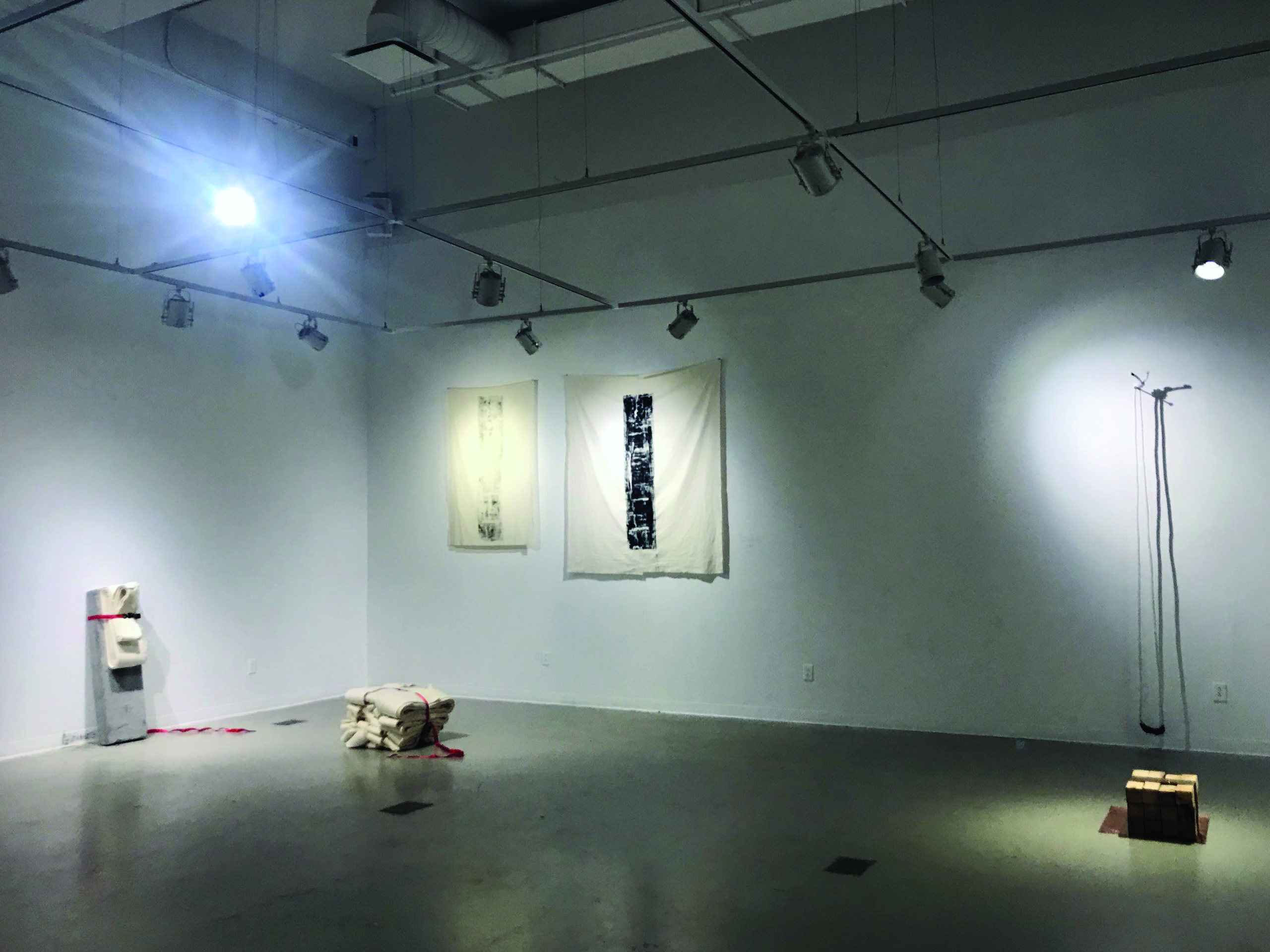Golnaz Taherian | Arts Editor
Featured Image: Weight, tension and gravity are skillfully manipulated to deepen the art. | Golnaz Taherian
York visual arts students, Ana Ghookassian and Eszter Rosta, present the exhibition ‘stages of an extreme’. This exhibition, utilizing printmaking and installation, marries complexity and minimalism in order to examine both the material world, and our place within it.
Ghookassian and Rosta inspire each other deeply. Although their respective works are dissimilar, they thematically parallel one another. Each work is processed-based, a method which requires a plethora of experimentation, note-taking, close-observations, and reflections in order to actualize their concepts in studio.
In terms of style, Ghookassian says: “Our work is minimalistic, but also reductionist. The material is our real focus, and we try to focus on the relationship that we have physically with those materials. We try to let the material lead us to the concept.”
When asked about York, Ghookassian says its “art department is very strong in faculty and studio. Almost all our professors are practicing artists in the Canadian art world. So, being exposed to their works has changed my outlook in the way I see contemporary arts.”
Rosta talks about the impact York has had on her art, saying: “Professors in the program have pushed me to my limits, to the point that I reconsider everything I do in a good way. Their critiques and values have been very instrumental to my practice.”
The work, “nameless objects” features two planks of wood laid flat in parallel. Rosta’s plank, laid on the right, is cracked and partly covered in ink. Other than the application of ink, the artist has altered nothing about the wood. It remains in its found state, evoking a sense of common familiarity.
Ghookassian’s wood piece, laid on the left and roughly half the length of the other piece, is “beyond untraditional.” The wood looks like velvet, from being burnt fully at the top. Ghookassian strongly invokes a sense of aesthetic satisfaction in the viewer.
In this exhibition, weight, tension and gravity are skillfully manipulated to deepen the art. For instance, Ghookassian’s “concrete block with three objects inside” presents a compressed and folded layer of wool tied with a ratchet strap against a heavy concrete block. The folding of the wool creates a sense of tension between natural and industrial material objects.
Rosta’s “skid printed on cotton” consists of wooden pallets printed on two cotton sheets. Rosta notes: “A lot of the ink didn’t stay because of how imperfect and weathered the wood was, so all the holes are there because the ink didn’t catch the wood, and I didn’t want to force something that wasn’t supposed to be there to be there.”
One of the fabrics is placed high above, making the piece very grand. Rosta’s piece breaks the traditional expectation of the way we view the print. In other words, nailing fabrics on the wall pushes things beyond the limit.
The artists conclude that: “Evidence of skids, ratchet straps and concrete lend themselves to becoming industrial markers, while connoting a precarious power within the work. ‘stages of an extreme’ is not a body of work or a series, it is a collection of objects and materials that co-exist in the space right now, in relation to one another.”


